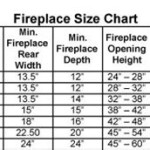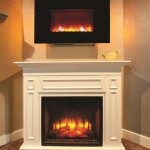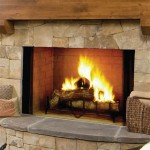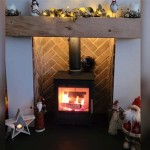Fireplace Screen: Decorative Considerations
Fireplace screens serve multiple purposes, including safety, functionality, and aesthetic enhancement. While some prioritize the protective function of a screen, others view it primarily as a decorative element, contributing to the overall style and ambiance of a living space. Focusing on fireplace screens designed primarily for decorative purposes requires an understanding of the materials, styles, and design principles that allow them to function as visual focal points.
The decision to employ a decorative fireplace screen often stems from a desire to elevate the fireplace from a purely functional element to a design feature. This is particularly relevant in situations where the fireplace is rarely, if ever, used for burning fuel. In such cases, the screen becomes a permanent fixture, integral to the room's aesthetic rather than a temporary safeguard. The selection process then shifts from prioritizing fire resistance to emphasizing visual appeal and compatibility with the room's decor.
Material Choices in Decorative Fireplace Screens
The material used in a decorative fireplace screen plays a crucial role in its aesthetic impact. Common materials include metal, glass, wood, and combinations thereof. Each material offers unique aesthetic characteristics and suitability for different design styles.
Metal screens, often crafted from wrought iron, brass, or steel, offer versatility in design. Wrought iron screens are frequently associated with traditional and rustic styles, featuring intricate scrollwork, floral motifs, or geometric patterns. The dark, textured surface of wrought iron adds depth and character to the fireplace. Brass screens, on the other hand, provide a more polished and refined appearance. Their golden hue can introduce warmth and elegance to a room, particularly when paired with classic or formal decor. Steel screens offer a contemporary aesthetic, with clean lines and a minimalist design. They can be powder-coated in various colors to complement a modern color scheme.
Glass screens, whether clear, frosted, or stained, introduce a different dimension to fireplace decoration. Clear glass screens offer an unobstructed view of the firebox (or the space within), maintaining the openness of the fireplace. Frosted glass screens provide a softer, more diffused appearance, obscuring the firebox while still allowing light to filter through. Stained glass screens offer the opportunity to introduce vibrant colors and intricate designs, transforming the fireplace into a work of art. These screens are particularly well-suited for eclectic or bohemian decor.
Wood screens, while less common due to their lower fire resistance, can add a natural and organic element to the fireplace. These screens are typically used in conjunction with a non-combustible backing material for safety. Wooden screens can be carved with intricate designs, painted, or stained to match the room's existing woodwork. They are particularly effective in creating a cozy and inviting atmosphere, especially in rustic or cottage-style homes.
Combinations of materials are also frequently employed in decorative fireplace screens. For example, a wrought iron frame may be inlaid with stained glass panels, or a metal screen may be adorned with wooden accents. These combinations allow for greater design flexibility and the creation of unique and personalized fireplace screens.
Style and Design Considerations
The style and design of a decorative fireplace screen should complement the overall aesthetic of the room. Considerations include the room's architectural style, color palette, and existing furniture. A well-chosen screen can enhance the room's design harmony, while a poorly chosen screen can disrupt it.
Traditional styles often feature ornate details, such as scrollwork, floral motifs, and classical architectural elements. These screens are typically crafted from wrought iron or brass and are often finished with a dark patina or a polished sheen. They are well-suited for formal living rooms, dining rooms, and libraries.
Modern styles emphasize clean lines, geometric shapes, and minimalist designs. These screens are often crafted from steel or aluminum and are finished with a powder-coated paint or a brushed metal surface. They are well-suited for contemporary living rooms, apartments, and lofts.
Rustic styles incorporate natural materials and textures, such as wood, stone, and wrought iron. These screens often feature rough-hewn surfaces, hand-forged details, and earthy colors. They are well-suited for country homes, cabins, and farmhouses.
Eclectic styles combine elements from different eras and cultures, creating a unique and personalized aesthetic. These screens can feature a mix of materials, colors, and patterns, reflecting the homeowner's individual taste and style. They are well-suited for artistic and unconventional homes.
The size of the screen is also an important consideration. The screen should be proportional to the size of the fireplace opening and the surrounding wall space. A screen that is too small will look insignificant, while a screen that is too large will overwhelm the fireplace. The height and width of the screen should be carefully measured to ensure a proper fit.
The color of the screen should also complement the room's color palette. A screen that is too bright or too dark will stand out in a distracting way. The color should be chosen to either blend in with the surrounding decor or to create a subtle contrast. Neutral colors, such as black, white, and gray, are versatile and can be easily incorporated into most color schemes. However, bolder colors, such as red, blue, or green, can also be used to add a pop of color to the room.
The Role of Decorative Screens in Interior Design
Decorative fireplace screens transcend mere functionality; they become integral components of interior design, influencing the perceived style and atmosphere of the space. Their impact extends beyond simply covering the fireplace opening; they contribute to the overall composition and visual narrative of the room.
A well-chosen decorative screen can serve as a focal point, drawing the eye and establishing a sense of balance within the room. Intricate designs, bold colors, or unique materials can transform the fireplace area into a captivating visual centerpiece. This is particularly effective in rooms with neutral color palettes or minimalist decor, where the screen can provide a much-needed injection of personality and visual interest.
Conversely, a more subtle and understated screen can complement the existing decor without overpowering it. Simpler designs, neutral colors, and materials that blend seamlessly with the surrounding elements can create a sense of harmony and cohesion within the room. This approach is often preferred in rooms with already strong design features, where the screen serves to enhance rather than compete with the existing aesthetic.
Decorative screens can also be used to reinforce a particular design theme or style. For example, a screen featuring nautical motifs, such as anchors, seashells, or sailboats, can enhance a coastal-themed living room. Similarly, a screen with geometric patterns and bright colors can complement a mid-century modern design. By carefully selecting a screen that aligns with the room's overall theme, homeowners can create a cohesive and visually appealing space.
Beyond their aesthetic contributions, decorative fireplace screens can also influence the perceived size and proportions of a room. A screen with vertical lines can create the illusion of height, while a screen with horizontal lines can make a room appear wider. Similarly, a screen with a mirrored surface can reflect light and create the illusion of more space. By strategically utilizing these visual effects, homeowners can optimize the perceived dimensions of their living spaces.
In conclusion, decorative fireplace screens offer a wide range of possibilities for enhancing the aesthetic appeal of a living space. By carefully considering the materials, styles, and design principles outlined above, homeowners can select a screen that perfectly complements their individual taste and the overall decor of their home. The fireplace, once a purely functional element, can be transformed into a statement piece, adding character, warmth, and visual interest to the room.

51 Decorative Fireplace Screens To Instantly Update Your

51 Decorative Fireplace Screens To Instantly Update Your

12 Best Freestanding Fireplace Screens 2024

51 Decorative Fireplace Screens To Instantly Update Your

Pleasant Hearth Arched 3 Panel Fireplace Screen 959 The Home Depot

Barton 44 In X 33 Free Standing Fireplace Screen 2 Panel Indoor Living Room Flat Gold 96322 The Home Depot

Enhance Your Home S Aesthetic With A Stylish Modern Fireplace Screen Claire Crowe Collection

12 Best Freestanding Fireplace Screens 2024

Wrought Iron Fireplace Screens Functionality And Style Accents

Mountain Cabin Fire Screen With Door Plow Hearth
Related Posts








